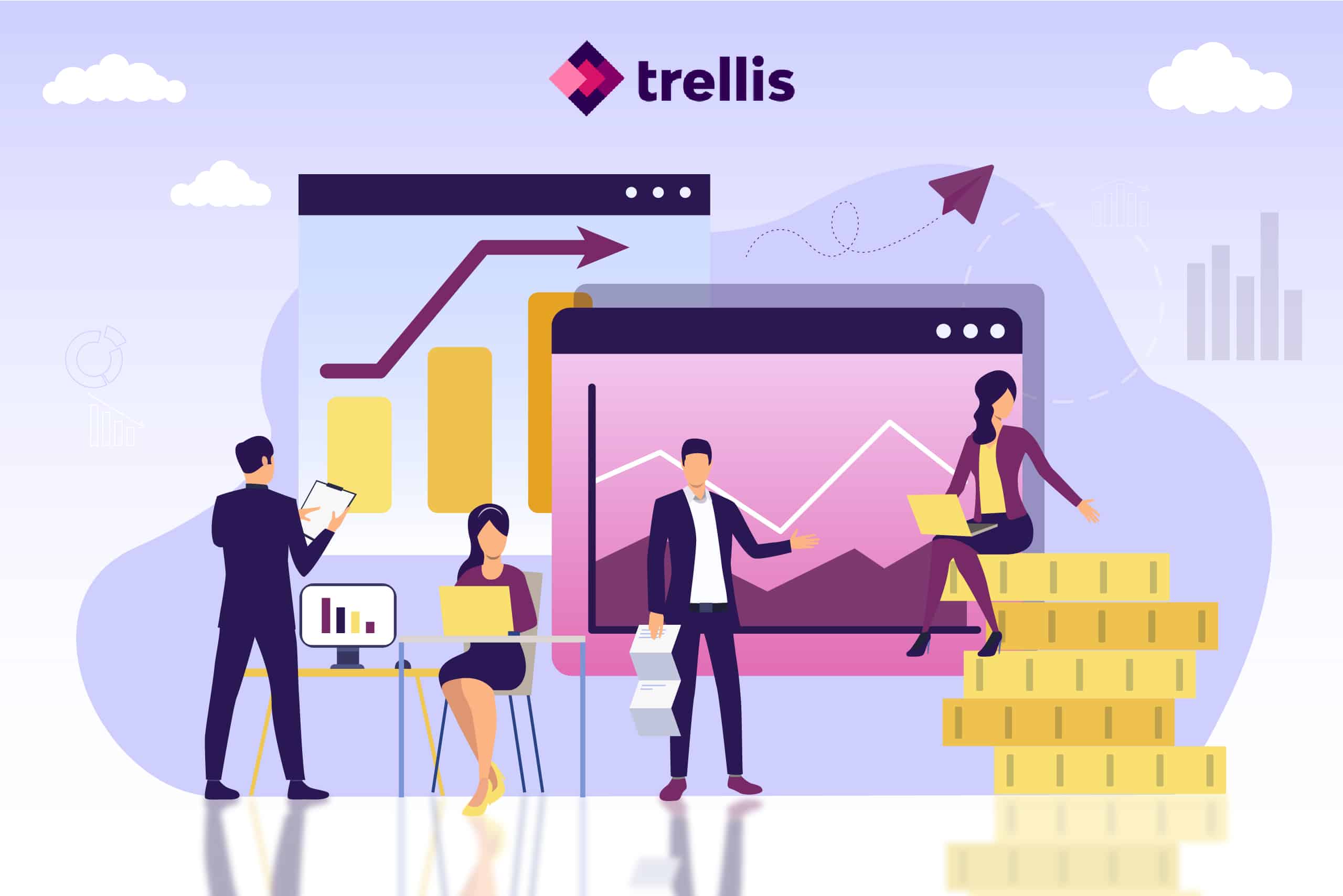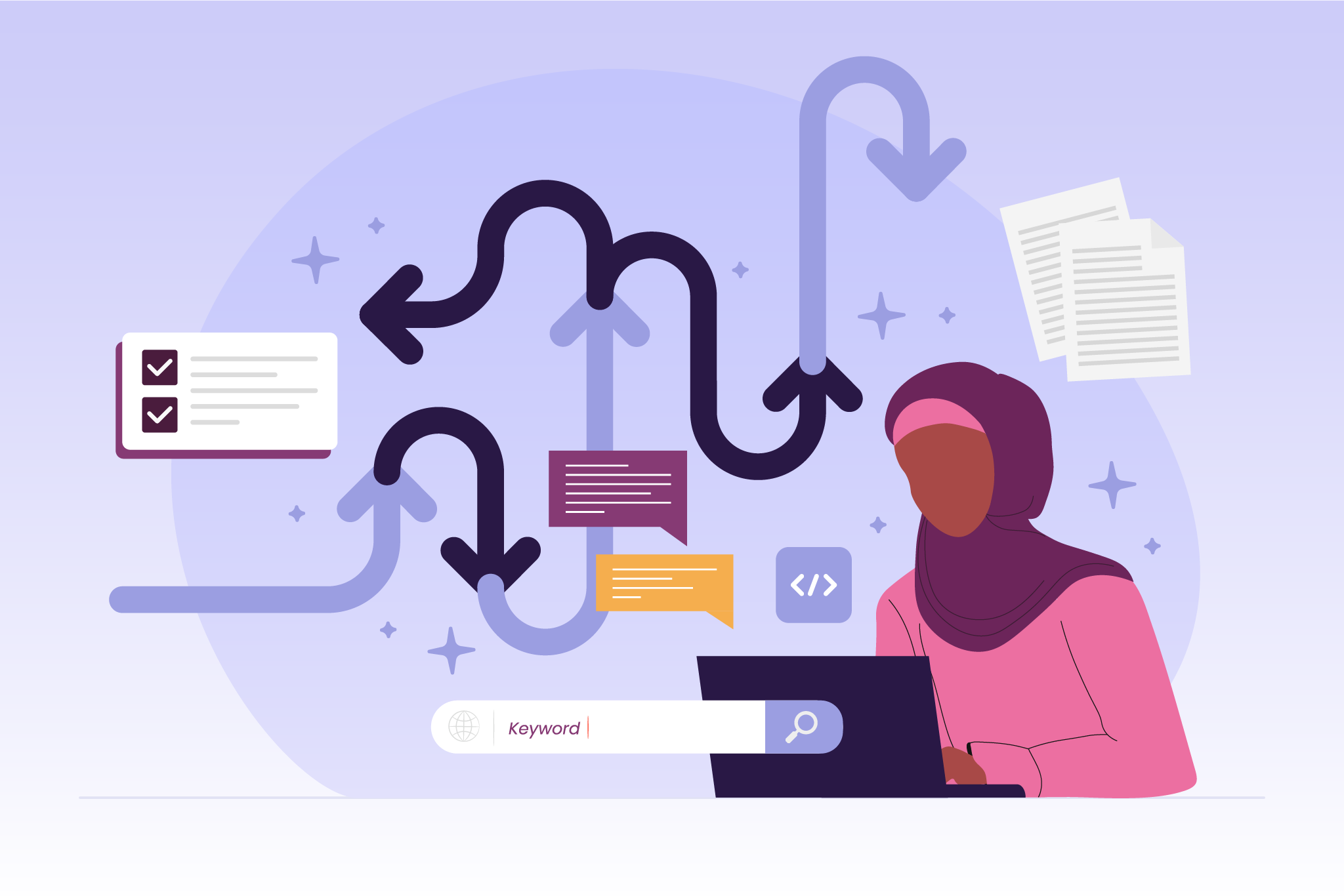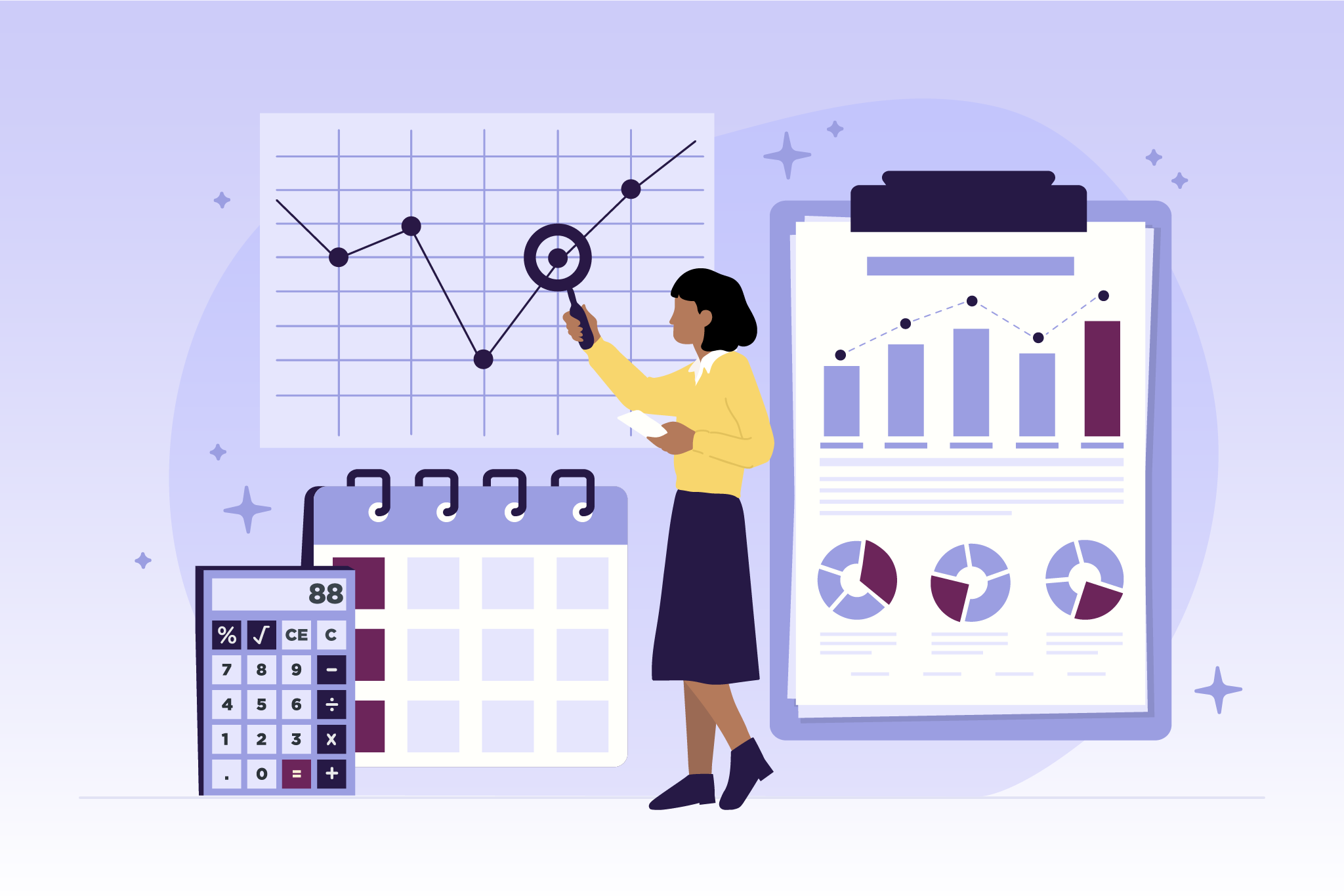In eCommerce, there are many levers brands can pull to achieve success. Traffic, sales volume, conversion optimization — a 1% increase here or there can translate to thousands of dollars in additional revenue.
When it comes to maximizing the value of every visitor to your store, one metric emerges as key: profit per session (pPS).
Why is pPS important, what insights does it reveal, and is it possible to focus too much on profitability?
Trellis’ Chief Evangelist Ali Babul and Chief Product Officer Krishna Vemulapali explored these questions and more in our recent video, Profit Per Session: The KPI to Grow Profitably on Amazon.View the whole session on demand, or read on for the full scoop.
What is Profit Per Session?
Profit per session (pPS) measures the average profit generated from each visitor to your site, whether they make a purchase or not. It’s calculated by dividing total profit by number of sessions for a given time period.
pPS = Total Profit / Number of Sessions
pPS helps you gauge your site’s performance from both conversion and profitability perspectives. Unlike average order value (AOV) or revenue per session, pPS accounts for your costs, giving you a holistic picture of your bottom line.
Factors that influence pPS include:
- Conversion rate
- Average order value
- Cost of goods sold
- Marketing expenses
- Website efficiency
➡️ Example: If your total profit for the month is $25,000 and you had 50,000 sessions during that period, your pPS would be $0.50.
Profit per session rises and falls directly with profit, but inversely with website traffic. Here’s how it fluctuates in a few different scenarios:
| Scenario | Monthly profit | Monthly sessions | pPS |
| Low traffic / high profit | $25K | 50K | $0.50 |
| High traffic / high profit | $100K | 500K | $0.20 |
| Low traffic / low profit | $5K | 50K | $0.10 |
| High traffic / low profit | $20K | 500K | $0.04 |
Why pPS is the Perfect North Star Metric
In today’s high-cost, high-competition eCommerce landscape, you can’t afford to get distracted by vanity metrics that don’t actually improve your business.
pPS is valuable because it combines several aspects of your eCommerce business’s performance into a single, actionable metric.
As Ali explains, “Every metric that we use to measure profitability comes back to profit per session.” It reflects the success of your marketing efforts, the effectiveness of your site, and the profitability of your product mix.
Let’s look at an example. We worked with a customer in the party supplies category to start consistently monitoring pPS and its impact across each of the 4Ps in eCommerce merchandising. Here’s what we discovered:
- Price sensitivity: As we drove more page views with advertising campaigns, we noticed that different price points affected conversion rates and click-through rates. This insight helped us fine-tune the client’s pricing strategies.
- Promotional impact: Monitoring pPS revealed the impact of the brand’s promotional activities in a way that other metrics didn’t. For example, we could closely watch pPS when adding a coupon — then determine whether that coupon was truly beneficial or if it was eating into profits.
- Advertising efficiency: pPS shed new light on the real relationship between ad spend and revenue. It helped us identify the right balance of advertising and pricing to maintain sales velocity and profitability.
- Dynamic optimization: We’ve discussed before that the “right” price is rarely static in eCommerce. It changes based on market conditions, competition, and consumer trends. pPS served as a meter to adapt to these changes quickly with dynamic pricing strategies.
The beauty of pPS lies in its ability to reveal the impact of each change you make to improve your eCommerce business. Here’s Ali again:
“When your ACoS is too high, more often than not, it’s not the targeting that’s the problem. It’s the fact that you may not have a promotion running and your competitor’s running a promotion. Or your price is too high in comparison to the rest of the market.”
In other words, one of your 4Ps is off. When you adjust each of these four levers, you can see how changes impact your pPS and how to adjust each one to achieve your profit and growth objectives.
Finding the Sweet Spot: Balancing pPS & Sales Volume
English poet John Donne once said, “No man is an island.” Similarly, no metric is an island. pPS is vital, but any metric viewed in isolation can miss out on key context and result in lost sales and/or profits.
The challenge for eCommerce brands is striking the right balance between optimizing pPS while maintaining a healthy sales volume. Focusing on pPS alone isn’t sustainable — or helpful — long-term.
For example, it is possible to over-index on profit per session and lose sales volume as a result. Here’s why.
- Marketplace ranking. It’s no secret sales volume can impact your rankings. Sacrificing volume for pPS can lead to decreased visibility over time.
- Brand awareness and market share. There are times when it makes sense to prioritize volume, even at lower margins, in order to build awareness and capture market share — e.g. when you launch a new product or need to maintain your ranking in a highly competitive category.
- Acquisition. Focusing solely on higher-profit transactions can limit your ability to attract new customers, who often start with lower-value purchases before becoming loyal, and therefore higher-value.
To keep a pulse on sales velocity and avoid the problems above, balance pPS with other key metrics like:
- Revenue per session
- Customer lifetime value
- Market share and growth rate
Once you’ve dialed in on pPS, you can zoom out again and look at growing your brand using each of the 4Ps as your levers.
Strike the optimal balance with these strategies:
- Dynamic pricing. Dynamic price adjustments let you maximize pPS during high-demand periods while maintaining volume during slower times.
- Product mix optimization. Offer a variety of products at different price points and profit margins. The right mix caters to a range of customers while maintaining overall profitability.
- Targeted promotions. Data-driven promotions can boost volume on specific products (or during certain periods) without significantly impacting pPS.
- Seasonal adjustments. The ideal balance between pPS and volume can shift throughout the year. For example, during peak seasons and holidays, you might choose to prioritize pPS since demand is high.
The key is to avoid a one-size-fits-all approach. Your goal isn’t to maximize pPS at all costs, but to find the sweet spot where profitability and growth coexist.
Common Pitfalls and How to Avoid Them
We’ve already established that overemphasizing pPS can come at the expense of growth. Here are a few other common mistakes and how to prevent them from dragging you down.
1. Ignoring customer lifetime value
Prioritizing short-term profits can harm long-term customer relationships.
Do this instead: Use a CLV-driven customer retention strategy and keep the big picture in mind.
2. Neglecting brand building for short-term gains
Your reputation — ratings, reviews, and customer experience — takes years to build and a minute to topple.
Do this instead: Invest in brand-building efforts that create lasting loyalty and positive word-of-mouth.
3. Overlooking the impact of returns on pPS
Calculating pPS is deceptively simple. How, exactly, do you calculate your total profit? Failing to account for the cost of returns can lead to an inflated sense of profitability.
Do this instead: Factor return costs into your pPS calculation and have a plan to minimize return rates.
4. Over-relying on discounts to drive sales
Everyone loves a good discount, but deep discounts all the time can erode your margins and train customers to wait for sales.
Do this instead: Use targeted, strategic promotions and focus messaging on value beyond price.
Strike the Right Balance Between Profits and Growth
For growing eCommerce brands, pPS is invaluable for measuring and improving performance. Using it as your north star metric while optimizing the 4Ps keeps you laser focused on profitability.
However, the goal isn’t to maximize pPS at all costs. Your real mission is to find the sweet spot where profitability and growth coexist and compound. By striking a balance between pPS, sales volume, customer lifetime value, and brand building, you can drive both profitability and long-term success.
Still digging through reports and spreadsheets to find that balance? Automation can help.To see how Trellis’ 4P Automation can optimize your business for both sales volume and profit, schedule your personalized demo today.






